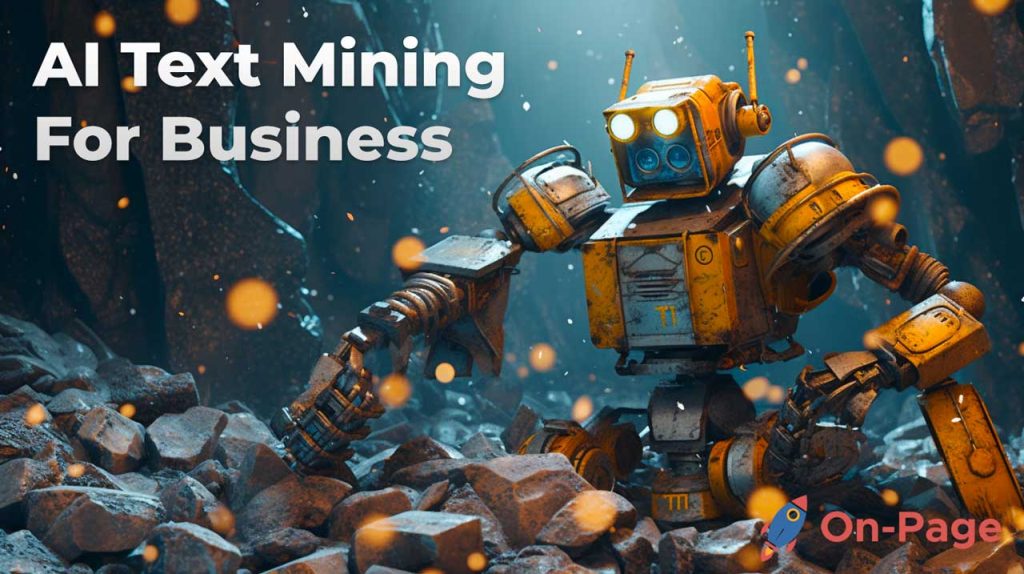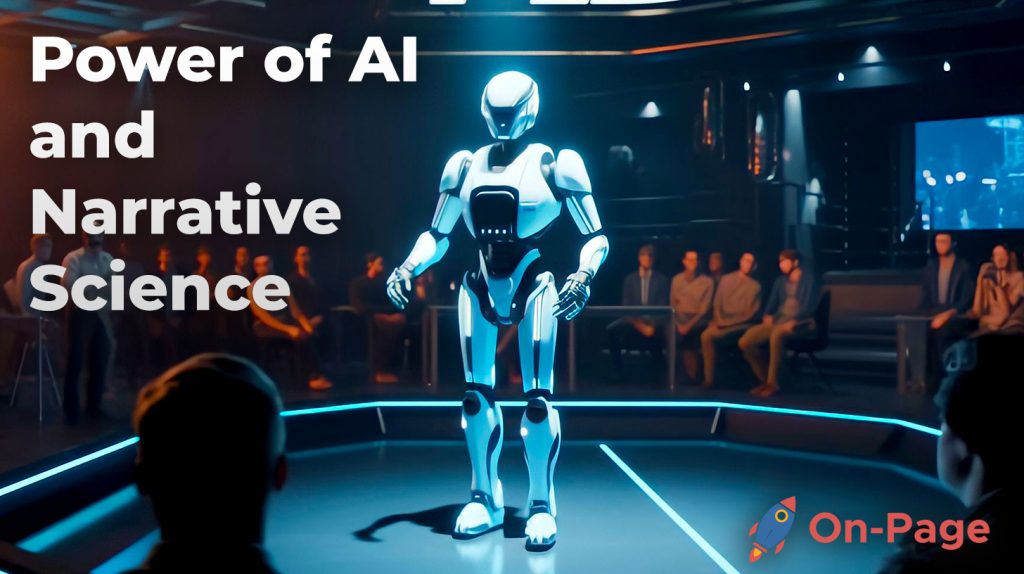Unlocking the Power of AI and Content Localization for Global Reach
Imagine a world where every person browsing online can engage with multimedia content in their native language! The power of AI and content localization has the potential to revolutionize how businesses transcend international borders, tearing down language barriers and allowing your brand’s global reach to skyrocket. With AI-driven SEO optimization tools like On-Page, all it takes is the click of a button to make this futuristic reality come true for your business. Say hello to an era of personalized and localized content experiences that’ll leave your worldwide audience clamoring for more. Are you ready to transform the global landscape and dominate with the best-optimized content? Welcome to the future; welcome onboard!
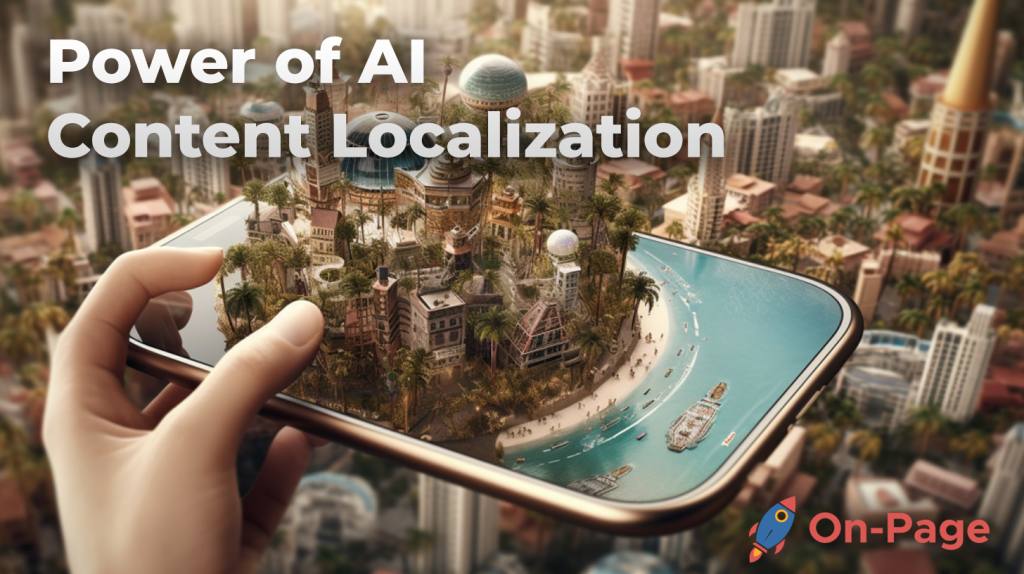
AI improves content localization by automating workflows, making the process faster and more efficient. Additionally, AI has the power to localize multimedia content, including images, videos, and audio files. With advances in machine translations and recognition of cultural nuances and idioms, AI-based solutions can help companies reach a global audience while maintaining authenticity and accuracy. By training computers with machine learning (ML), deep learning (DL), and natural language processing (NLP) techniques, AI can understand human languages and extract insights from source text quickly. Overall, AI technology significantly speeds up the localization process while reducing business costs.
AI and Content Localization: A Powerful Combination
Artificial Intelligence (AI) technology allows machines to simulate human behavior, and when it comes to content localization, it has the potential to revolutionize the industry. Today, as companies seek to reach a global audience with their products and services, content localization has emerged as a critical factor in achieving market success. However, traditional methods of content localization have been cumbersome and time-consuming processes that often involve manual translation and editing.
This is where AI-powered content localization solutions come in handy. With AI, companies can streamline the entire localization process significantly, reducing errors and saving considerable time and resources in the process. Essentially, AI-powered content localization solutions automate the translation process through machine learning algorithms, resulting in faster turnaround times, lower costs, and, most importantly, language accuracy.
For instance, an American-based clothing brand intended to expand its customer base internationally. However, they quickly realized that their website needed localized content that resonated with international customers for their marketing efforts to succeed. They began translating English pages into different languages using traditional techniques but found it too slow for their needs.
The company then discovered an AI-driven content localization solution that leveraged machine learning technologies such as deep learning and natural language processing (NLP). The solution automated the entire translation process end to end by working within a company’s existing infrastructure through an API.
The result was astounding – the company managed to localize thousands of pages of content across multiple languages in less than two months. Also, review time decreased by more than 50%, so translators only had to go over suggestions from the machine instead of starting every paragraph from scratch. Furthermore, past experiences of dealing with human errors or inconsistencies vanished.
A closer look at deep learning and NLP
- In a 2021 study by CSA Research, the global market for language services and technology (including AI-driven content localization) is expected to reach $56.18 billion by 2024, with a compound annual growth rate of 6.7%.
- A 2019 PWC report predicts that AI-powered translation could increase global GDP by up to $153 billion per year by breaking down language barriers and fostering international trade.
- A 2020 study by Semantix found that the use of AI-powered content localization is expected to save businesses up to 80% of the time spent on manual translation processes, allowing them to focus more on strategy and marketing efforts.
The Role of Deep Learning and Natural Language Processing

Deep learning and NLP are some of the essential technologies that power AI-driven content localization solutions. Essentially, deep learning involves training computers to mimic the human brain’s function to allow it to track changes in language nuances in real time. On the other hand, NLP trains computers to understand human languages better and extract insights from source texts.
Food Examples
For example, a food delivery company based in the United States wanted to roll out its services globally but faced challenges dealing with local dialects and speech nuances that were unique to each region. It used an AI-based content localization solution that utilized deep learning and NLP technologies to understand local dialects better.
Now, some might argue that traditional methods of localization are still relevant or that AI-powered solutions lack accuracy. However, contrary to these beliefs, recent studies have shown that machines can match or even surpass the linguistic proficiency of humans in certain cases.
Imagine trying to translate a single block of text into five different languages manually – it would be a daunting task for anyone with just rudimentary knowledge of those languages. But for an AI-powered solution, it’s merely a case of splitting text blocks down into their constituent parts and using machine learning algorithms such as word embeddings to train models on making accurate guesses on how best to translate words.
The deep learning revolution has transformed many aspects of content creation over the past decade, and now it is set to change content localization too. Harnessing AI-driven content localization solutions opens up entirely new opportunities for businesses looking to expand globally by simplifying translation tasks and automating previously manual processes.
Understanding Machine Translation and AI-driven Localization Solutions
One of the most significant advantages of utilizing AI in content localization is its ability to utilize machine translation for more accurate and efficient translations. Machine translation refers to the use of software programs or algorithms to translate text or speech from one language to another. This process has gone beyond simple word-for-word translations, as AI technology can recognize contextual and cultural nuances to provide more accurate translations.
AI-driven localization solutions are a powerful tool for businesses looking to expand their reach globally. These solutions combine machine translation with other AI technologies, such as natural language processing and deep learning, to provide an accurate and efficient way of translating content.
For instance, imagine a business that wants to expand its products’ reach globally but faces issues with its current translation process. They may have translators who are not familiar with certain dialects. Still, AI-powered localization solutions could provide them with translations that accurately convey their brands’ message across all languages. This solution can save businesses time and money while increasing their global reach.
From a technical standpoint, machine translation algorithms rely on statistical models built on large datasets of language pairs. The more data that algorithms process, the better they become at understanding language nuances and improving their translation accuracy. With the help of advanced deep learning algorithms made possible by AI technology, machine translations have increased their accuracy rate.
While many may argue that machine translations fall short in producing high-quality humanlike translations, these solutions have improved significantly over the years. Their accuracy rates outperform traditional methods costing substantially less than human-led language services.
Benefits of AI in Content Localization
The benefits of utilizing AI in content localization are vast and range from cost and time savings to unlocking new localization capabilities and formats.

One benefit is speed efficiency advancements. With traditional translation methods (human translators), it may take days or even weeks to translate large amounts of content. With AI solutions, businesses can receive translation results in a matter of hours. This results in faster time-to-market on new products and services.
AI technology is fast-evolving, making localization more efficient than ever before. Not only does AI-powered localization provide speed efficiency advancements, but also provides the capability to learn and improve over time through machine learning algorithms.
The use of AI increases workflow automation within content localization, resulting in laser-focused translations for multiple-language markets. This structure can help businesses localize their content without losing focus on the overall intention of their brand and message.
Skeptics may argue that human translators provide better translations than any automated solution could provide. Humans understand cultural norms and nuances far beyond what technology has mimicked so far. Undoubtedly true, however, those improvements will continue to evolve as technological advances reproduce such skills with minimal discrepancies.
Speed and Accuracy Advancements
One of the most significant benefits of AI in content localization is its ability to improve speed and accuracy. With AI-driven solutions, it becomes possible to localize vast amounts of content in a short amount of time while still adhering to high levels of accuracy.
Traditional localization practices involved manual processes that were time-consuming and often prone to errors. However, with advancements in technology, AI-powered localization has become much faster and more efficient. For instance, machine translation can rapidly translate large volumes of content with reasonable accuracy compared to human translation.
A study by the European Association for Machine Translation indicated that post-editing can increase the output capacity for professional translators by up to 60% while maintaining quality standards. This means that by using AI solutions for machine translation combined with post-editing by human translators, it could be possible to localize more content in a shorter amount of time.
While the use of AI in content localization undoubtedly improves speed and accuracy, some critics argue that machine translation can never replace human translators completely. They argue that language nuances and cultural context require a level of understanding only humans can provide.
It’s crucial to view machine translation as a tool rather than a replacement. As an analogy, think about GPS navigation systems used in cars. While they provide essential guidance, they are not perfect and sometimes give bad directions or fail to account for unexpected roadblocks or changes. Similar to GPS systems, machine translation still requires human oversight to ensure accurate translations.
Despite debates on its effectiveness, there’s no denying that AI-driven solutions have made significant strides in improving the speed and accuracy of content localization. Another benefit worth exploring is how this technology unlocks new localization capabilities and formats.
Unlocking New Localization Capabilities and Formats
Content localization is not just limited to text-based content such as websites and documents. Today, businesses need to provide localized content for various formats such as video and audio to meet the needs of global audiences. AI-driven solutions can help unlock these new localization capabilities and formats.
A prime example of this is Synthesia, an AI-based solution that helps create lifelike videos with multi-language voiceovers and subtitles. It offers a level of customization where you can change the background, characters, and objects in a video to fit specific cultural contexts.

Other examples include Meta’s AI image translation solution that allows for translation of images and photographs, along with translating words into similar font styles and even languages. Similarly, Large Language Model AI platforms like DALL-E 2 and Github CoPilot have made significant advancements in helping with content research, image needs, and language translation.
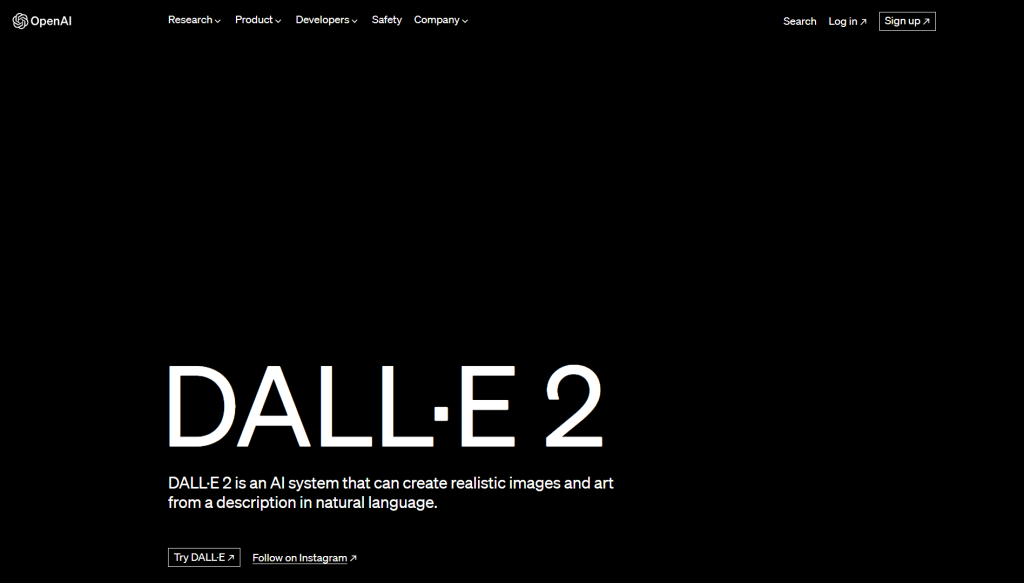
Some skeptics may argue that AI-driven solutions for new localization capabilities could lead to homogenized and generic content devoid of local idioms or cultural contexts.
However, it’s vital to note that these tools are meant to help businesses streamline their localization processes while maintaining high levels of quality. AI is not there to replace human understanding but rather to supplement it. Similar to how cameras were revolutionized with autofocus technology, machine learning-based localization solutions help improve accuracy while still allowing flexibility for creativity and personalization.
All in all, the combination of AI and content localization has profound impacts on breaking barriers between businesses and their global audience. This leads us to explore further how different businesses have harnessed the power of AI-localization solutions in real-world scenarios.
Real-World Examples of AI-Powered Localization
Many companies have successfully adopted the use of AI-powered localization to expand their global reach and improve their workflow. Here are some real-world examples of how AI has benefited businesses in different industries.
One notable example is Netflix, which has revolutionized the entertainment industry through its global localization efforts. The online streaming giant uses AI to identify what types of content are popular in different regions and then tailors its content accordingly. Netflix’s algorithms analyze viewer behavior, such as searches and viewing patterns, to recommend content in the viewers’ preferred language. By leveraging localization with AI, Netflix continues to successfully expand into new markets without relying solely on translating foreign languages.

Another example is IKEA, a Swedish furniture company that leverages AI-powered localization to offer product descriptions in multiple languages. IKEA uses machine learning algorithms to analyze customer data from various countries, identifying the most searched products in each region. They then tailor those products’ descriptions and names to fit culturally specific idioms and expressions improving customer engagement.

Critics of AI claim that it risks undermining cultural diversity by automating language translation and distorting various idioms or metaphors in different contexts. However, there are tangible benefits where AI has been implemented correctly, such as the creation of culturally appropriate images, search terms related to local trends, and natural translations for colloquial conversations.
Microsoft Translator is another leading player that harnesses the power of content localization using AI technology. Their translator allows users to translate any text or web page into over 60 languages with just one click. It also provides real-time transcription for lectures or speeches as an optional feature for office subscribers.
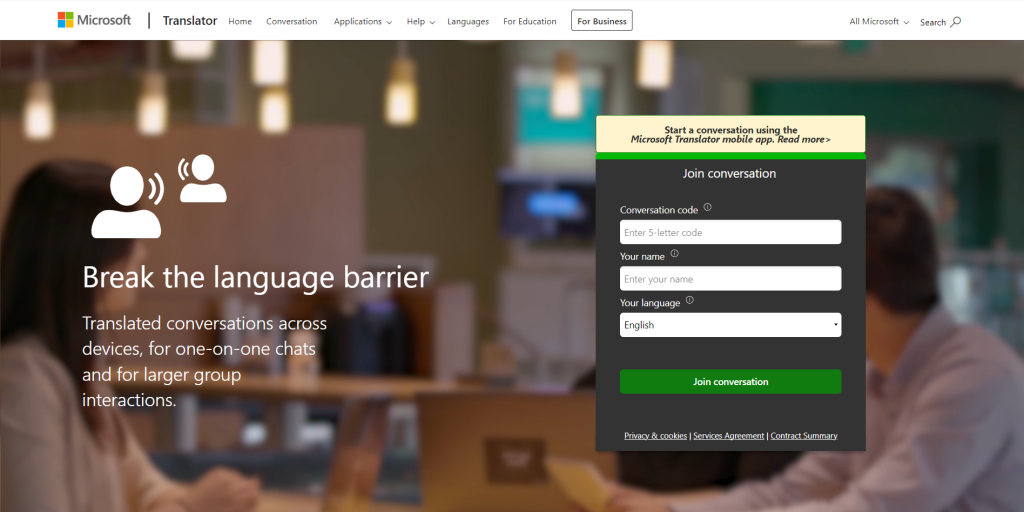
Just like how GPS navigation tools help drivers navigate unfamiliar roads by giving directions in real-time, machine translation technology can help people communicate across language barriers. Leveraging AI-powered content localization helps companies and individuals break down language barriers and connect with more people, expanding their reach globally and enabling them to create engaging content.
These examples illustrate the effectiveness of AI in powering successful localization efforts for businesses of all types. However, to truly understand its impact, we must look at case studies on how specific entities are using AI-powered solutions for content globalization.
Case Studies of Businesses Harnessing AI Localization
Here are some examples of businesses that have successfully leveraged AI localization tools to expand their presence worldwide.
One leading voice assistant software provider that uses AI for localization is Amazon Alexa. Alexa recently introduced “Multilingual Mode” which allows customers to speak in one language and can respond back in multiple languages automatically. For example, an Italian speaker living in a predominantly English-speaking region can ask Alexa questions or request home control functions in either language. This feature contributes positively towards making technology accessible to everyone around the world while providing added convenience for different language speakers.

Another example is the fashion brand Louis Vuitton, which creates unique customer experiences by customizing its products as per the customer’s culture, language, country of origin, and preferences. This creates personalized customer interactions generating insightful data that feeds back into machine learning models to better understand customers’ cultural preferences. They use this data to influence product design, packaging, seasonal color schemes, and styles that align with regional taste buds creating global connectivity.

While there are concerns about potential mistranslation caused by different interpretations of puns or culturally distinct turns of phrase found across the globe. The adoption rate of these systems has increased due to accurate results reported by users.
In another instance, Airbnb draws data-driven insights from analyzing user search terms for accommodation properties on its platform across multiple region-specific marketplaces. By analyzing user searches and behavior, Airbnb offers experiences that adapt to customers’ preferences, like recommending local events, organizing tours, and offering local modes of transportation improving its customer engagement.

The implementation of AI is changing the way businesses view localization. These examples illustrate how companies can expand their global reach through AI-driven localization efforts while creating personalized customer experiences that adapt to cultural differences. As more organizations capitalize on these new technologies, we can expect to see a significant impact on globalization in years to come.
- Businesses across different industries are successfully using AI localization tools to expand their global reach and create personalized customer experiences that cater to cultural differences. Companies like Amazon Alexa, Louis Vuitton, and Airbnb have leveraged AI-driven localization features to offer multilingual communication, product customization, and data-driven insights generating in-depth analysis of customers’ preferences for better engagement. These examples indicate that AI is changing the way businesses approach localization, and its adoption is expected to have a significant impact on globalization in the coming years.
The Future of AI and Content Localization
The integration of AI technology in content localization has already revolutionized the industry. And as technology continues to evolve, especially in the field of AI, it’s exciting to think about what the future holds for content localization.
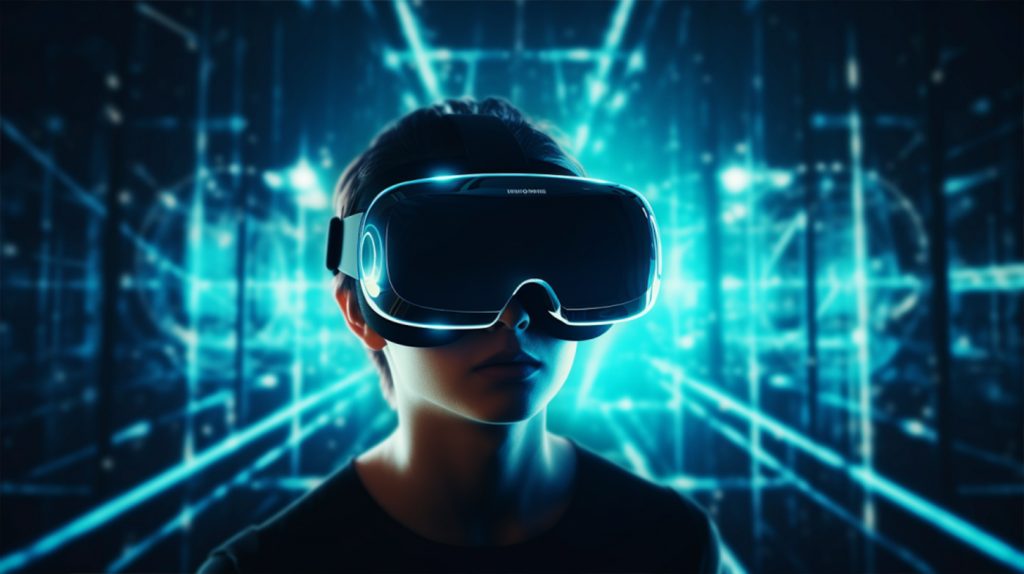
One potential area where we can see significant advancements includes even more accurate machine translations. As AI models continue to learn and process vast amounts of data on different languages, their ability to discern idiomatic expressions or complex phrases will continue to improve. In addition, recent advancements in voice recognition and text-to-speech technologies have given rise to real-time translation systems that can seamlessly translate spoken conversations. Such innovations in machine translation will make language barriers a thing of the past.
Another innovation we’re likely to see is the expansion of multimedia localization capabilities. Today, video files pose unique challenges when it comes to localization because they contain both audio and visual components. However, with AI-powered technologies that can extract and translate closed captions and subtitles, video content can reach a wider audience without losing its intended meaning.
In addition, emerging trends in conversational AI offer an immense opportunity for companies to personalize their product offerings even further. Companies will leverage natural language processing (NLP) engines trained on customer interactions to provide improved online support or chatbot services that are fluent in several languages.
As localization moves beyond just text-based documents, we could also see AI-powered solutions for localizing Augmented Reality/Virtual Reality (AR/VR) experiences. With the help of computer vision and image recognition technologies, AR experiences could use immersive and interactive storytelling techniques that engage audiences while overcoming any language barriers.
For instance, imagine a tourist visiting Japan who wants to experience its rich culture by attending a traditional tea ceremony. Despite Japan’s efforts towards increasing multilingual signage in public spaces and transportation facilities during the Olympics games this year, tourists may still encounter difficulties navigating around or communicating with the vendors. But with AR/VR and AI-powered translations, visitors can enjoy the tea ceremony without worrying about the language barrier or cultural conflict.
In fact, some companies have already started testing such solutions. For instance, Microsoft’s Translate AR app uses a smartphone camera and machine translation to display captions for users in real-time. With this technology, users can point their smartphone at a sign or menu in any language and understand it right away.
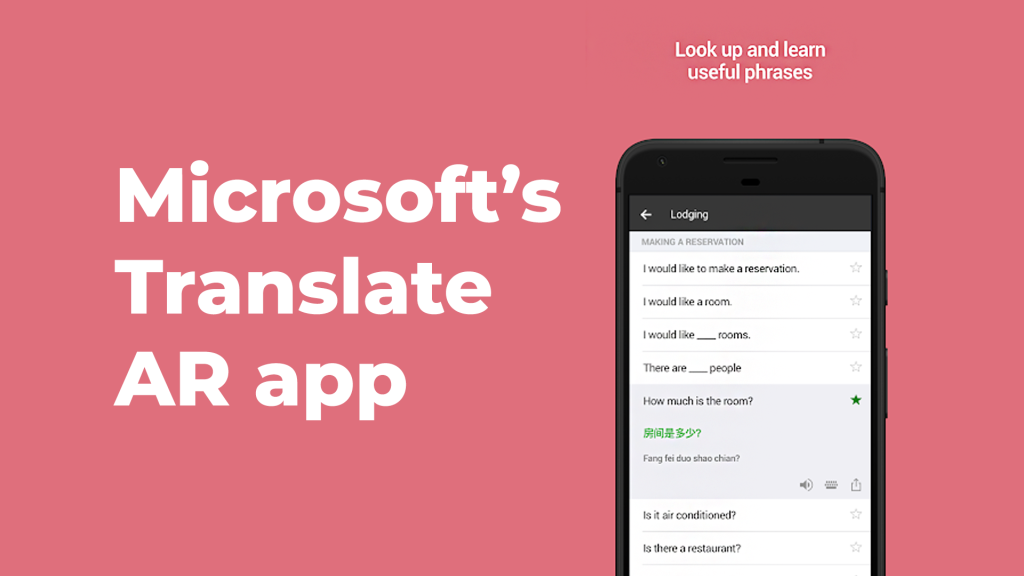
Some people argue about the risks of oversimplifying cultures through localization. While AI helps break down language barriers, there is a possibility we might miss out on exploring how different cultures perceive things. To address this issue, content creators must consider how sensitive topics like colors, symbols, or gestures can potentially offend certain lifestyles.
Like any technology, there are also concerns about potential biases in AI systems based on training data or model architectures. It is important that as the use of AI expands across various fields; content localization professionals work to ensure that such biases are eliminated before new technologies hit the market.
As we continue to push the boundaries of AI-based localization solutions deeper into uncharted territory, we’re also likely to see new trends emerge on the global stage.
Emerging Trends and Potential Innovation
One emerging trend we’re seeing is an increased focus on localization for low-resource languages. A lot of minority languages do not yet have adequate digital resources available for optimal localization. However, recent advancements in Neural Machine Translation (NMT) have made it possible to translate between many more uncommon language pairs than ever before.
Another potential area for innovation includes augmented reality (AR) experiences as immersive digital tours that can be localized quickly and accurately using AI technologies. This would not only make travel more accessible but also provide tourists with more dynamic and engaging experiences.
In addition, we’re seeing rapid growth in cloud-based translation management systems (TMS) that are leveraging AI to streamline the localization process. These platforms offer secure collaboration workspaces for teams, integrations for CMS or eCommerce platforms, and simplified translation workflows. Such systems can help speed up the localization process while also reducing costs.
We’re also seeing automated quality control systems emerging that leverage AI in detecting errors in translated content. The use of machine learning algorithms in identifying linguistic patterns can help find and correct any errors more efficiently than ever before.
Finally, it’s important to note that as data privacy regulations continue to evolve across different countries, localization teams will need to comply with increasing legal standards. Technologies like blockchain and secure automation will play vital roles in ensuring secure data handling.
One such company using blockchain technology is Datum which offers a GDPR-compliant data storage platform that can be utilized by businesses running machine learning models on customer data or any confidential information.

AI-powered solutions for content localization offer unparalleled speed, efficiency, accuracy, and scalability benefits. From improving global reach to opening new business opportunities, AI unlocks new horizons for localization professionals to explore.
However, some challenges still exist when it comes to replacing human expertise altogether. In critical cases like medical or legal applications – accurate human translations are still preferred because of the high-risk factor. Furthermore, cultural nuances are best understood by humans, so while AI boosts efficiency, it is best used as an assistant rather than a replacement.
It’s like having a mechanic fix our car problems; we could use a digital assistant for minor issues that we can solve ourselves but still require a professional expert when things get complicated.
With innovative technologies like AI-powered machine translation and NLP engines continually evolving and improving alongside shifts in user behaviors and market trends, the future of content localization looks bright indeed. For content optimization, please visit On-Page.ai.

Responses to Common Questions
How accurate is AI in localizing content compared to human translators?

AI has made significant strides in recent years toward localization, providing accurate and efficient translations to facilitate global reach. However, the accuracy of AI in localization still falls short compared to human translators.
According to a research study carried out by SDL, an AI-empowered company, 71% of consumers prefer content in their native language, indicating the importance of localization for businesses looking to reach global markets. While AI-powered translations are useful in handling basic translation tasks, they lack fluency and cultural context.
Human translators provide nuance and context that an algorithm is unable to duplicate. A deep understanding of the target language enables them to translate idioms, slang, or even cultural norms that are specific to certain regions. This ensures that the message intended for the audience is accurately conveyed without any misunderstandings.
A study conducted by Common Sense Advisory also supports this argument, showing that multilingual companies with human translators have increased revenue by at least 10% compared to those who rely solely on machine translation.
In summary, while AI is making great strides toward localization accuracy, it still cannot match the quality and context provided by human translators. Businesses should strive for a balanced approach when localizing their content for global markets – combining the efficiency of AI with the expertise and nuanced translation of human translators.
What industries or businesses benefit the most from using AI for content localization?
There are several industries that can reap the benefits of using AI for content localization, but the top ones are e-commerce, travel and tourism, and entertainment. Let me explain why.
In e-commerce, personalized marketing is critical to engaging customers and driving sales. By utilizing AI for content localization, companies can create tailored content that truly resonates with their target audience. A study conducted by CSA Research found that companies leveraging AI in their localization strategy saw an average increase of 10-30% in revenue.
When it comes to travel and tourism, language barriers can be a major obstacle for customers looking to plan their trips. AI-powered translation software can help companies provide more comprehensive information about destinations, accommodations, and activities, leading to better customer experiences and higher conversion rates. According to a report by Common Sense Advisory, adding a single additional language to a website can result in a 25% increase in global market reach.
Finally, the entertainment industry can benefit from AI for content localization by reaching broader audiences and expanding revenue streams through international licensing deals. Netflix has famously used AI to analyze viewer data and create recommendations and subtitles that resonate with specific regions and cultural groups. This approach has helped the company expand its reach into over 190 countries.
Overall, AI and content localization have proven to be game-changing technologies for businesses looking to expand into new markets and engage global audiences.
Are there any challenges with using AI for content localization?
Yes, there are certainly challenges with using AI for content localization. AI is undoubtedly a powerful tool to help brands and businesses reach a global audience by translating their content into different languages and adapting it to suit diverse cultural contexts. However, AI still has limitations and shortcomings that can affect the accuracy of localized content.
One of the main challenges with using AI for content localization is the lack of context. Even with sophisticated natural language processing (NLP) algorithms, AI technology struggles to understand the nuances and subtleties of language that vary from culture to culture. This can lead to inaccuracies in translations or interpretations of meanings that may not align with the intended message.
Another challenge is biases in AI algorithms. Many AI models are trained on biased datasets, which can perpetuate stereotypes and reinforce discriminatory attitudes towards certain groups. This could be especially problematic when translating marketing materials or other forms of content that have a significant impact on how people perceive a brand or product.
Finally, there is also the issue of quality control when relying too heavily on AI for content localization. While AI can certainly speed up the process of translation and adaptation, it cannot always replace human expertise when it comes to ensuring that the localized content is polished, error-free, and culturally appropriate for its intended audience.
According to a report by CSA Research, “Improving International Customer Experience through Quality Localization” (2019), 78% of consumers said they would be less likely to buy from a company if its website was not available in their language. Therefore, it’s crucial to get content localization right when targeting global audiences.
In conclusion, while AI has the potential to transform global content localization, it’s important not to rely solely on technology without considering its limitations and potential pitfalls. A balanced approach that combines human expertise with AI automation is likely to yield the best results in terms of accuracy, efficiency, and overall customer satisfaction.
What impact does AI have on the time and cost of content localization?
AI has revolutionized the time and cost of content localization. By enabling machines to understand and translate human language, AI systems drastically reduce the time required for human translators to localize content. According to a survey by Common Sense Advisory, companies using machine translation saved an average of 30% on localization costs and cut the time-to-market by 60%.
Moreover, AI-based localization tools are capable of learning from previous translations and improving their accuracy over time. This leads to further cost savings and helps in achieving consistency across all localized content.
Additionally, modern AI algorithms can analyze various linguistic and cultural factors to ensure that localized content resonates with local audiences. This ensures that businesses can reach out to new markets with minimal risk of misinterpreting consumer expectations or creating ineffective messaging.
The impact of AI in content localization is clear – it improves efficiency, enhances quality, reduces costs, and delivers better ROI. With its ever-evolving capabilities, there is no doubt that AI will continue shaping the localization industry in years to come.
What kind of AI technologies are being used for content localization?
AI technologies are revolutionizing the way content is localized for global reach. One of the most popular AI technologies used in content localization is called Natural Language Processing (NLP). NLP algorithms break down language structures, interpret patterns and meanings, and provide accurate translations. Another technology that has gained traction in recent years is Machine Translation (MT). MT algorithms analyze vast amounts of bilingual content to understand context, linguistics, and grammar rules.
In addition to NLP and MT, there are various other AI technologies being used in content localization. For instance, Image Recognition can identify text in images and translate it into different languages seamlessly. Voice Recognition can understand and transcribe spoken language, making it easier to translate audio content accurately.
The use of these AI technologies in content localization has been rapidly growing over the past few years, with a compound annual growth rate (CAGR) of 18% projected between 2020-2025 for the machine translation market alone according to Grand View Research.
In conclusion, using AI technologies such as NLP, MT, Image Recognition, and Voice Recognition for content localization provides significant benefits in terms of time and cost savings while also improving translation quality.

